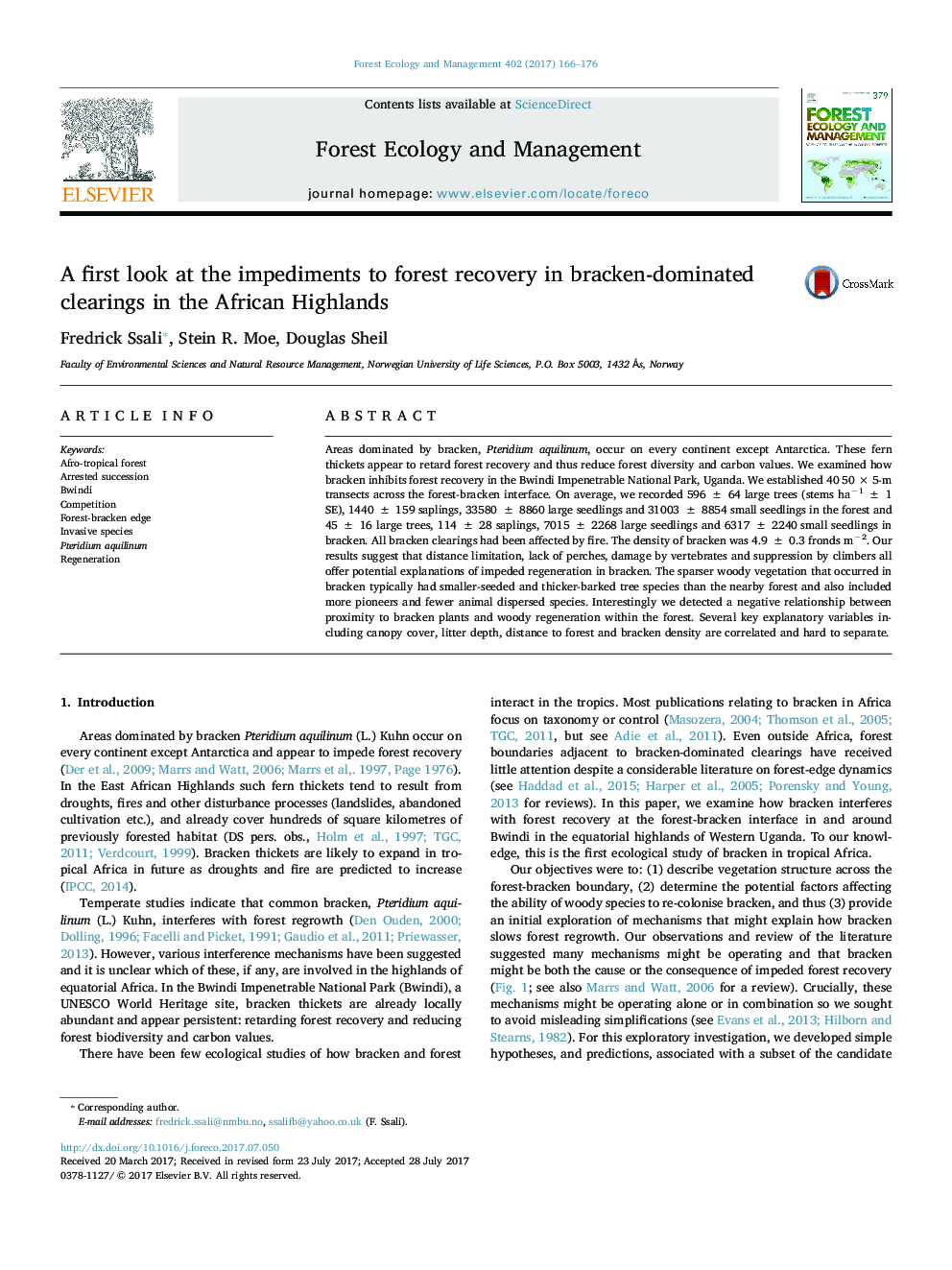| کد مقاله | کد نشریه | سال انتشار | مقاله انگلیسی | نسخه تمام متن |
|---|---|---|---|---|
| 4759349 | 1421356 | 2017 | 11 صفحه PDF | دانلود رایگان |
عنوان انگلیسی مقاله ISI
A first look at the impediments to forest recovery in bracken-dominated clearings in the African Highlands
ترجمه فارسی عنوان
اولین نگاهی به موانع بروز جنگل ها در برآمدگیهای تحت فشار برکین در ارتفاعات آفریقایی
دانلود مقاله + سفارش ترجمه
دانلود مقاله ISI انگلیسی
رایگان برای ایرانیان
کلمات کلیدی
موضوعات مرتبط
علوم زیستی و بیوفناوری
علوم کشاورزی و بیولوژیک
بوم شناسی، تکامل، رفتار و سامانه شناسی
چکیده انگلیسی
Areas dominated by bracken, Pteridium aquilinum, occur on every continent except Antarctica. These fern thickets appear to retard forest recovery and thus reduce forest diversity and carbon values. We examined how bracken inhibits forest recovery in the Bwindi Impenetrable National Park, Uganda. We established 40 50 Ã 5-m transects across the forest-bracken interface. On average, we recorded 596 ± 64 large trees (stems haâ1 ± 1 SE), 1440 ± 159 saplings, 33580 ± 8860 large seedlings and 31003 ± 8854 small seedlings in the forest and 45 ± 16 large trees, 114 ± 28 saplings, 7015 ± 2268 large seedlings and 6317 ± 2240 small seedlings in bracken. All bracken clearings had been affected by fire. The density of bracken was 4.9 ± 0.3 fronds mâ2. Our results suggest that distance limitation, lack of perches, damage by vertebrates and suppression by climbers all offer potential explanations of impeded regeneration in bracken. The sparser woody vegetation that occurred in bracken typically had smaller-seeded and thicker-barked tree species than the nearby forest and also included more pioneers and fewer animal dispersed species. Interestingly we detected a negative relationship between proximity to bracken plants and woody regeneration within the forest. Several key explanatory variables including canopy cover, litter depth, distance to forest and bracken density are correlated and hard to separate.
ناشر
Database: Elsevier - ScienceDirect (ساینس دایرکت)
Journal: Forest Ecology and Management - Volume 402, 15 October 2017, Pages 166-176
Journal: Forest Ecology and Management - Volume 402, 15 October 2017, Pages 166-176
نویسندگان
Fredrick Ssali, Stein R. Moe, Douglas Sheil,
